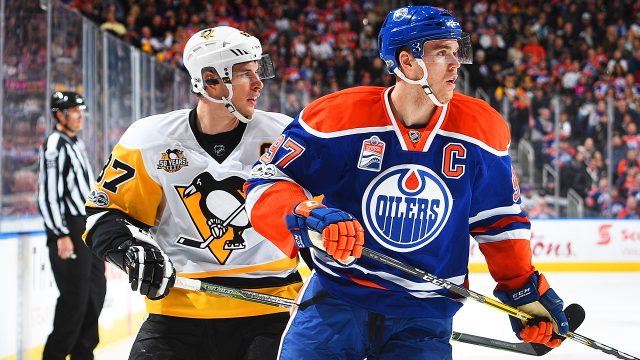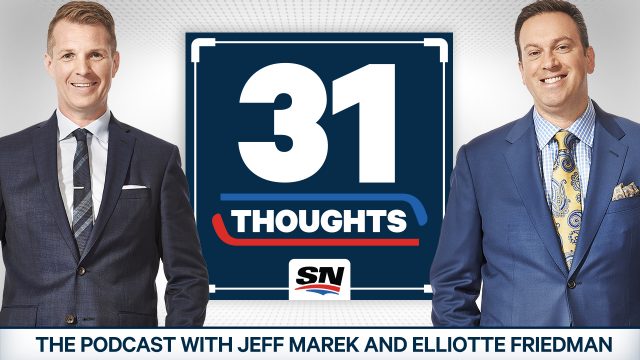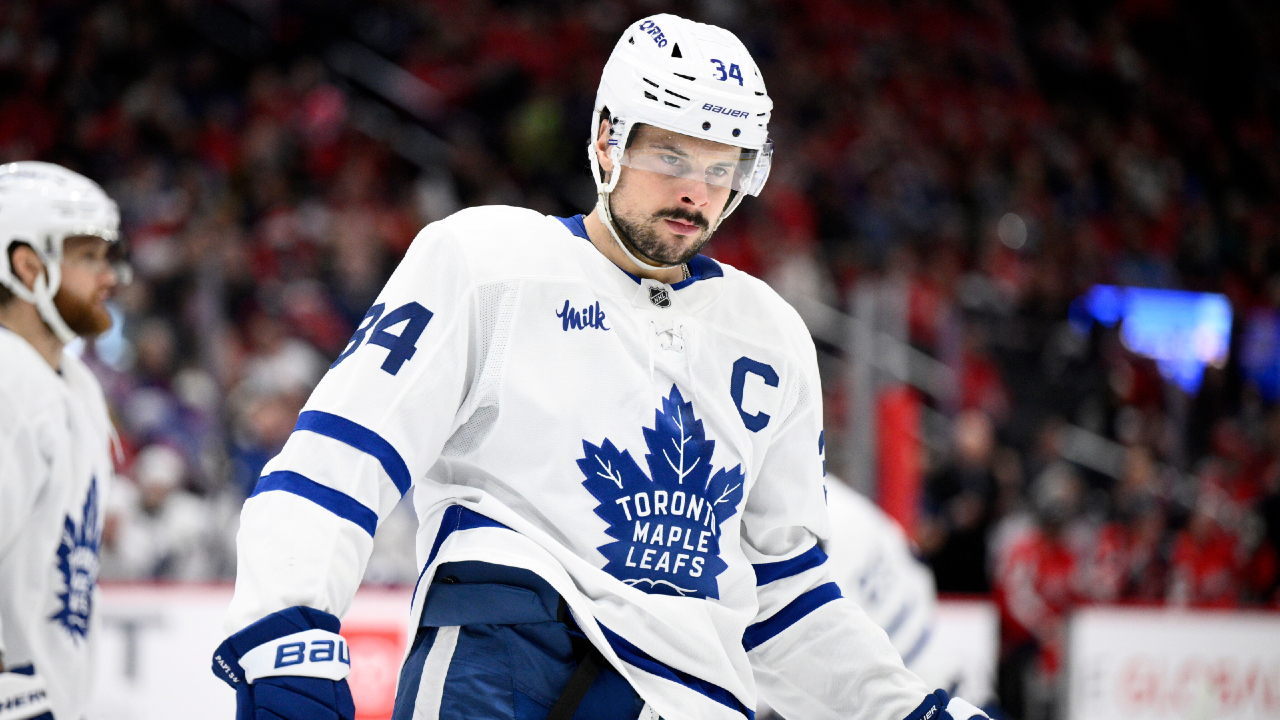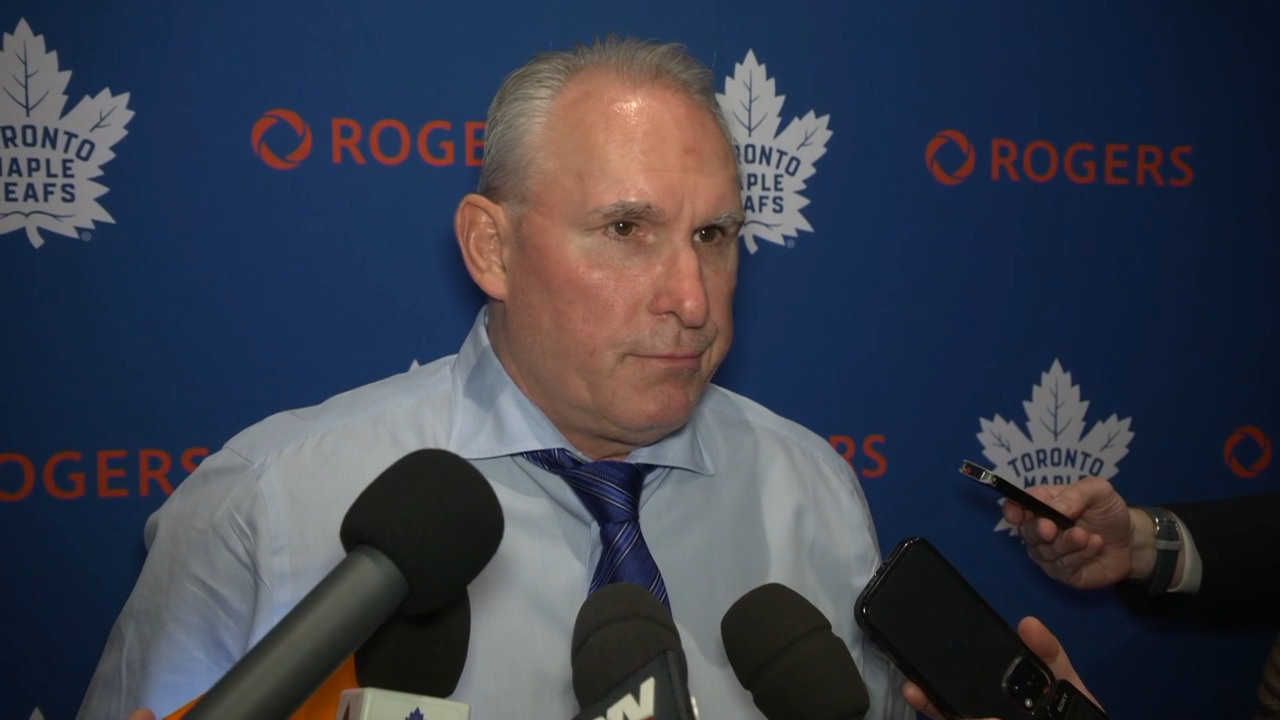
Unrestricted free agency is the bane of the existence of many general managers in the NHL. Combining the late age at which players hit the free market, the NHL’s hard salary cap and hockey’s tendency to overvalue past performance, free agency day is often a time of regret instead of a time of excitement.
However, every year there are players available who won’t get nearly the salary that they should based on their underlying play, and it’s always fun to try to identify who those diamonds in the rough will be.
Sometimes they’re younger players who do things that aren’t as flashy as their peers but lead to great results, and sometimes they’re older players that many count out, but have a bit more to give when you look a little closer. On top of that, you have the players who are perfectly capable, but have seen their perceived value crater due to factors outside their control.
Speaking of that last category, let’s talk about…
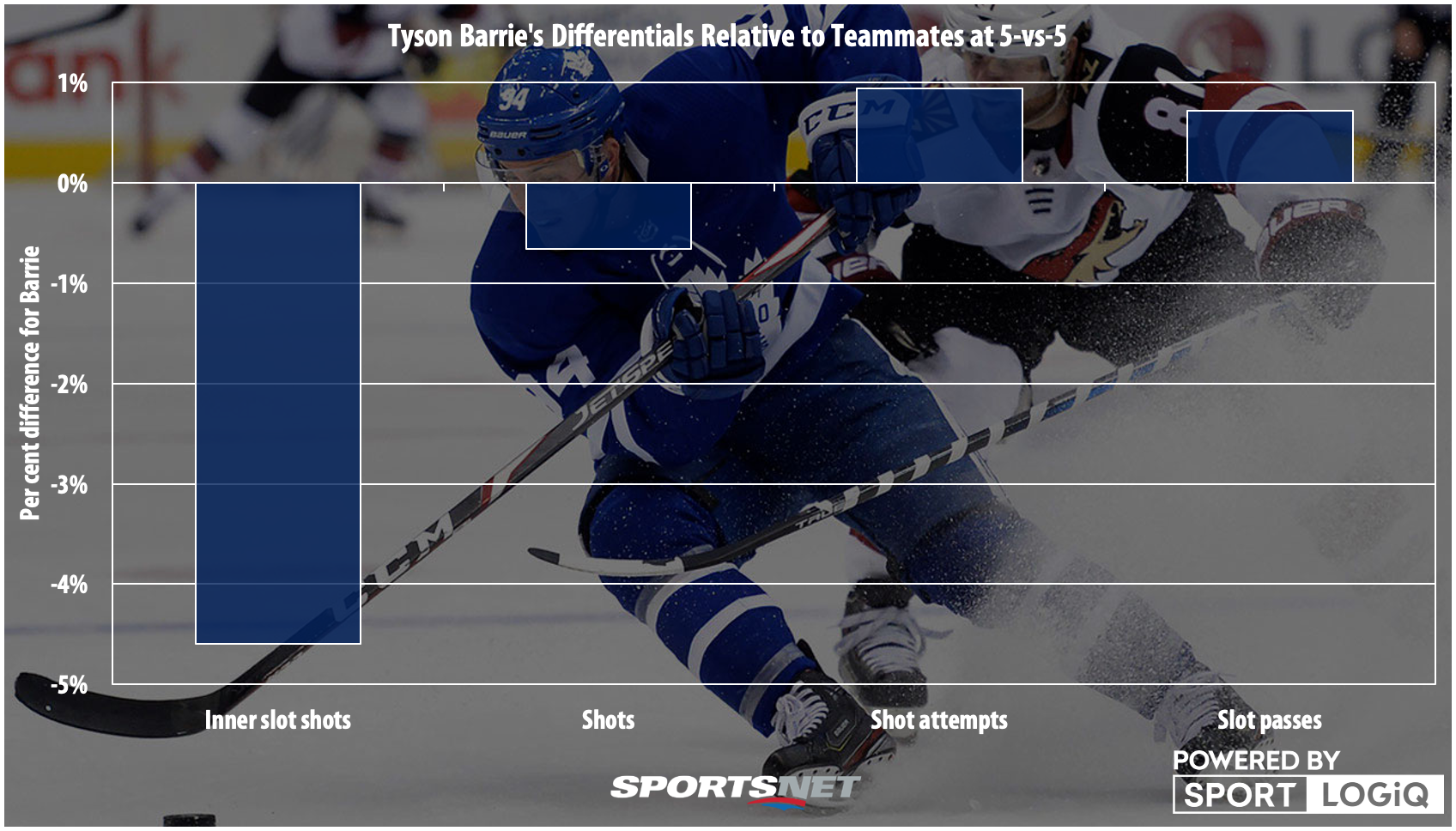
Raked over the coals from nearly the beginning in his first and likely only season with the Toronto Maple Leafs, Tyson Barrie probably isn’t about to get a big contract come the opening of free agency. The perception all season was that he not only underperformed, but was flat out bad.
The reality of the situation is a little more complicated. Offensively, the Barrie who flirted with 60-point seasons in Colorado likely isn’t going to be returning as the defenceman is heading into the last year of his 20s, but he still managed nearly 40 points in a shortened season, while not able to contribute offensively in the way he normally does.
When you look at his on-ice differentials, you might think that the brutal inner-slot shot differential while Barrie was on the ice for Toronto was due to him being awful defensively, but in reality it was actually 5-vs-5 offence that was depressed while he was on the ice.
Curiously, there was nothing really wrong with Barrie’s on-ice offence most of the time, but whenever he shared the ice with John Tavares’ line, the Leafs’ offence dried up. There may have been a chemistry issue with the way Barrie generates offence compared to how Tavares does it. Or it could be that Barrie struggled in the role handed to Tavares by the coaching staff. Or it could even be a combination of those two factors, and some randomness at play. It’s tough to decipher why Tavares and Barrie were so poor together.
What we do know, though, is that Barrie was solidly in the middle of the pack among Leafs rearguards defensively — he wasn’t a particular liability at all — and despite the poor underlying numbers offensively, he was able to contribute over a half-point per game. No one should be looking to him as a solution on their top pairing, but as a solid second-pairing guy who you can insulate with a responsible partner so he can take more risks? Don’t be surprised if Barrie ends up as a lower-tier version of Kevin Shattenkirk this season.

A very different player to Barrie, Dylan DeMelo is one of the more underrated defencemen in the league because he’s essentially allergic to personally contributing to offence. Despite his own lack of point production, his presence on the ice historically has not prevented his team from creating offensive opportunities.
That’s a big deal, because defensively DeMelo is a juggernaut. DeMelo played on two of the worst defensive teams in the NHL last season in the Ottawa Senators and Winnipeg Jets, and yet while he was on the ice it was like opponents were playing against the Boston Bruins. Teams couldn’t generate shots in tight at all, and they couldn’t get passes through or to the middle of the ice.
I can’t imagine there’s any coach in the NHL who wouldn’t love having this guy on their team. He makes all the simple plays that you want to see from a defensive defenceman, gets the puck away from opponents and back to his own teammates, plays incredibly sound positional hockey and when he does try to make some big plays — like a big stretch pass to a streaking forward — he actually executes at a high level.
DeMelo isn’t going to singlehandedly change the dynamic of a team — he’s not a dominant possession driver like Miro Heiskanen or Quinn Hughes — but as a No. 3 or No. 4 defenceman, he’s better than most of what every team has, and yet you don’t hear his name very often.
In all likelihood, DeMelo will only get between $3 million and $4.5 million per season on his next contract, and his impact makes him look like he’s worth at least $6 million.
Even if the writing may have been on the wall for the future of the New York Rangers, it’s incredibly sad that this is the way one of the greatest players in their franchise history ended their time in Manhattan. The fact that Lundqvist is 38-years-old and is a few years removed from his last dominant season, combined with the fact that the goalie market is absolutely flooded with talent, likely means if “King Henrik” decides to play in the NHL next season, whoever is getting him is likely going to get a huge bargain.
I mentioned on Twitter recently that despite his age I don’t believe Lundqvist is done as a highly performing goaltender, and that’s part of why I think this decision by the Rangers was a bit rash. In fact, Lundqvist had the best high-danger save percentage of all of the Rangers goaltenders last season by a wide margin, and the highly regarded Igor Shesterkin saw his save percentage significantly boosted by a ton of perimeter shots, and saving 99 per cent of those instead of the league average of 97 per cent.
So what’s behind Lundqvist’s overall save percentage drop in recent seasons? Age is a significant factor, but so is the way the Rangers play.
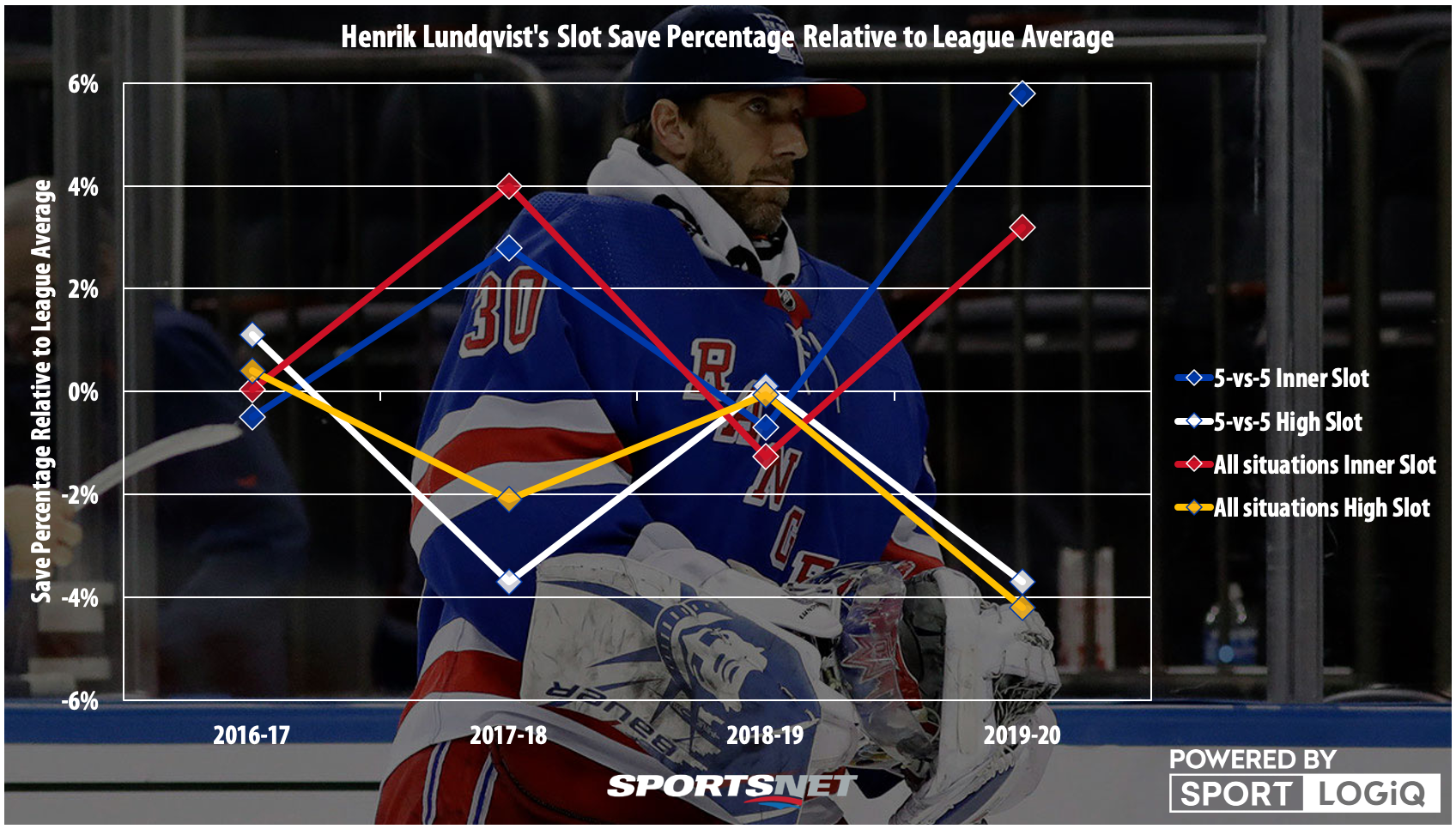
In 2016-17, Lundqvist had the first “bad” season of his NHL career, or, more accurately, he was very average. During that period of Rangers hockey and the years before, they were a team that had a reputation of being poor defensively. The big reason for that was they gave up tons of shots from the inner slot.
However, Lundqvist was able to weather that style of loose defence pretty easily throughout his career because he plays very deep in his net compared to almost all of his peers, keeping his movements tight and controlled to react quickly to shots in tight. As you get older, though, your reaction time slows a little, so Lundqvist started to play even deeper in his net after 2016-17, after seeing his save percentage on inner-slot shots drop to about league average.
The following season saw Lundqvist post inner-slot save percentages among the league’s elite, but from the high slot, he was picked apart. Between 2016-17 and 2017-18, the Rangers’ defensive style started to change, and they started to give up 16 per cent more slot passes, meaning on shots from further out, Lundqvist was more exposed.
Over the following seasons, the Rangers would see their slot passes against rise 17.4 per cent and another four per cent again, for a total of 41.4 per cent more slot passes against per 60 minutes at 5-vs-5 than they did in Lundqvist’s prime. During the same time, the Rangers started allowing 47 per cent more shots on net from the high slot, so despite Lundqvist being brilliant from his usual area last season, he was brutalized from there.
And whether it was facing better teams than Alexandar Georgiev or Shesterkin, or the Rangers trusting Lundqvist too much and taking risks, they allowed 16.4 per cent more slot passes against with Lunqvist in net than either of the other two, and significantly fewer perimeter shots for him to gobble up and boost his save percentage.
The time where Lundqvist is the best or one of the best goaltenders in the NHL is almost certainly done, but I strongly believe the idea that he’s been a net negative in recent years is rooted in poor interpretation of data rather than anything to do with his performance.
On a team that limits pre-shot movement effectively, or protects the high slot well, I don’t see any reason why he couldn’t be the top option in a tandem goalie setting. Teams that are itching for security in goal, such as the Carolina Hurricanes or Colorado Avalanche, would do well to give him a call.


